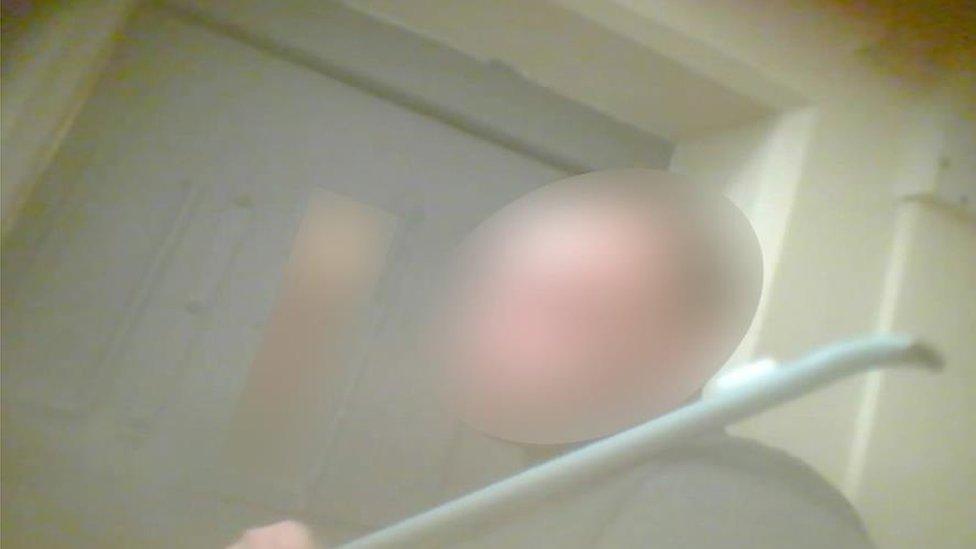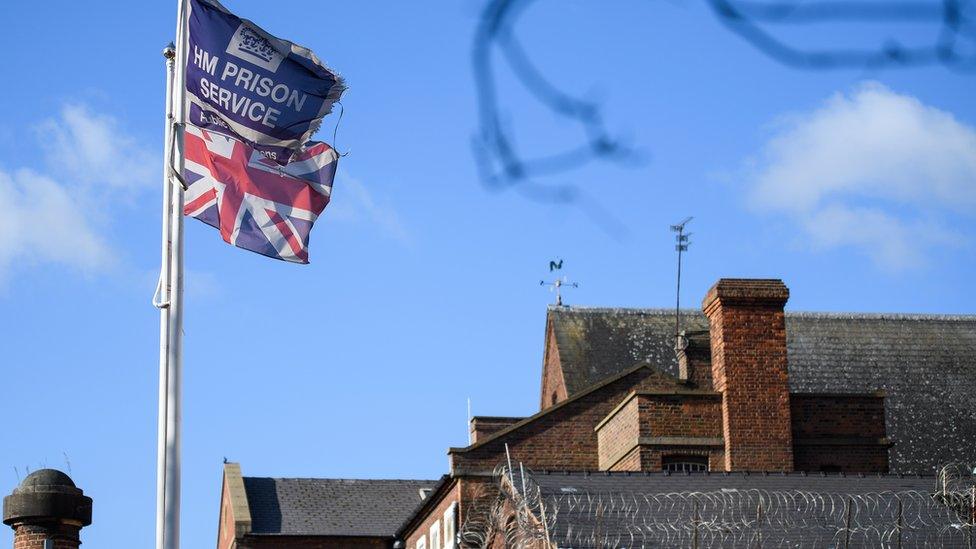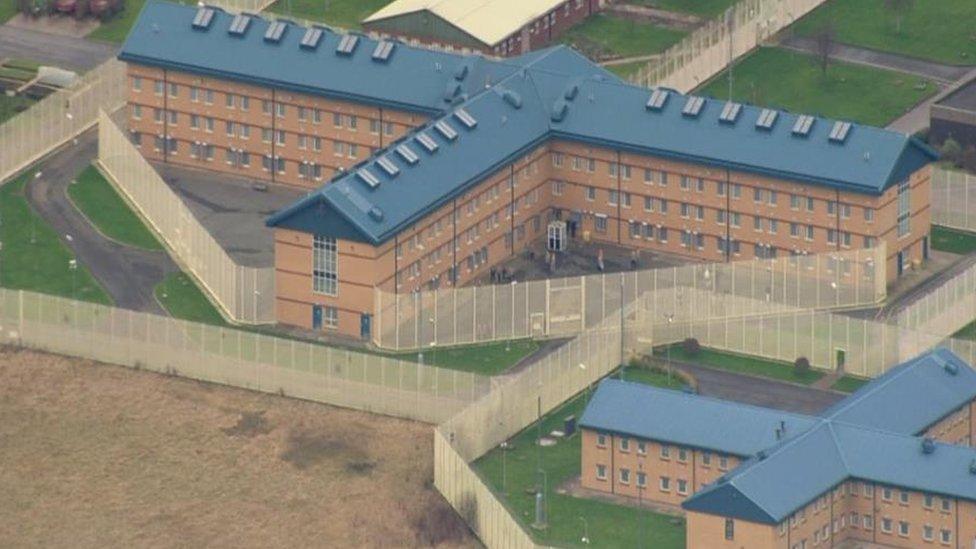Is it harder to smuggle drugs into high security prisons?
- Published

After BBC Panorama found "chaos" in one of the biggest prisons in England, Newsbeat spoke to an ex-prison officer about how easy it is to smuggle illegal goods into different categories of prisons.
An undercover reporter was threatened by inmates, and also saw drugs and wire cutters which had been smuggled in.
HMP Northumberland, where the events were secretly filmed, is a category C prison - that means it has lower levels of security than category A or B prisons.
So how do different category prisons affect the people inside them?

The BBC's undercover reporter was threatened by an inmate with an improvised weapon
In practical terms, the layers of security - for example, the number of locked doors between the cell and the street - are not that different in each category.
And prison officers are trained to work in all kinds of institute too.
Instead, it's more about the amount of freedom given to prisoners and the numbers of officers overseeing them.
Newsbeat spoke to Glyn Travis, an ex-prison officer who now works for the Prison Officers' Association.
He's worked in all types of prison: categories A, B, C and D, the last of which is an open prison.
Category A
"High security [category A] prisons have more surveillance technology around them and security is a lot higher," he says.
These prisons house the most high-risk inmates, for example prisoners who are deemed to pose a risk to national security or those convicted of the most serious crimes, including murder.
Glyn Travis says that these prisoners can often be violent towards the officers.
"Category A inmates know they won't be out for a long time, so it can be harder to deal with the behaviour of those individuals," he says.
"The prisoners can be a lot more in your face."

Category B
Meanwhile, category B prisons hold those who are seen as slightly less of a risk, but the levels of surveillance and technology still mean any chances of escape is minimal.
Offenders awaiting trial, or those who have previously been in category A prison, typically start their custody in category B prisons.
They are usually moved into the lower-category prisons as they get closer to release.
"The benchmark ratio is that there are about three times more officers in category A and B prisons than there are in category C prisons," says Glyn Travis.
He's reluctant to give exact numbers of how many inmates there are per officer because he says there might be safety issues for the officers.
But he does say: "You could get one or two officers trying to control 60 or 90 inmates in some places."

HMP Northumberland, where the undercover filming took place
Category C
Category C prisons, like HMP Northumberland, are for prisoners who aren't deemed as much of an escape risk.
However, as Panorama found, they can still pose a safety risk to other prisoners and officers.
The BBC's undercover reporter found one officer "having convulsions on the floor after accidentally inhaling spice", which is a synthetic cannabis substitute.
Glyn Travis says that these findings are "not surprising whatsoever."
He adds: "Tennis or rugby balls filled with drugs and phones or Sim cards are freely being thrown over walls.
"Now with drones getting them over, the flow of drugs is unstoppable."

But he says that the category of prison doesn't make a difference when it comes to smuggling contraband goods in.
"It's exactly the same in every estate [prison], because there's a chronic shortfall of staff.
"More prisoners are becoming violent. Prisoners no longer feel safe, and staff no longer feel safe."
Category D
Category D, or open prisons, do have a "more relaxed regime because the prisoners are due to be released," says Glyn Travis.
Some of these prisoners will have been moved from higher-security prisons to try and help their integration back into society when they are released.

Nurses treating an inmate who has taken drugs in prison
However, he does say that the level of drugs and alcohol in these prisons is as high as in any other category.
In fact, he says that the control of illegal goods in prisons is more to do with whether individual estates are well-staffed or not.
Or, to put it more bluntly: "It's all about the bucks."
It should be said that these categorisations only apply to adult male prisons in England and Wales.
Prisons in Scotland work on a different system, while women's prisons or young offenders' institutes are not segregated.
A Prison Service spokesperson told Newsbeat: "We have announced a major shake-up of the prison system with 2,500 extra prison officers and new security measures to tackle drones, phones and drugs and help make prisons places of safety and reform.
"These are long-standing issues that will not be resolved in weeks or months but our wholescale reforms will lay the groundwork to transform our prisons, reduce reoffending, and make our communities safer."
Find us on Instagram at BBCNewsbeat, external and follow us on Snapchat, search for bbc_newsbeat, external